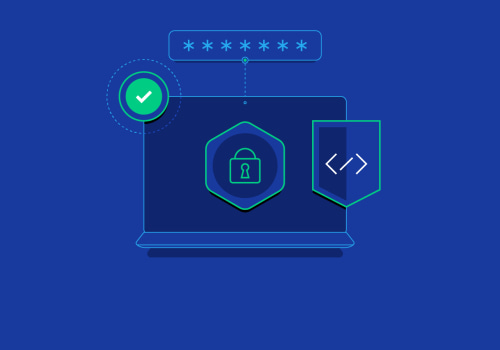Audit documentation is one of the most important elements of the audit preparation process. It is the foundation for ensuring that an audit is thorough and accurate. Knowing the requirements for audit documentation can help organizations ensure that they are meeting the necessary standards and reducing the risk of errors or omissions. This article will provide a comprehensive overview of audit documentation requirements and best practices to help organizations prepare for a successful audit.
Audit Documentation Requirements
are essential for any HIPAA IT security audit and audit preparation process.Without it, organizations may not be able to demonstrate their compliance with the necessary regulations and standards. In order to effectively comply with these requirements, organizations must understand what is expected of them when preparing for an audit. The types of documentation required for a HIPAA IT security audit and audit preparation process can vary depending on the organization. Generally speaking, it should include policies and procedures, technical system documentation, audit logs, and other evidence that demonstrate the organization’s compliance with the applicable regulations and standards.
Policies and procedures provide an overview of the organization’s security measures, while technical system documentation provides specific details about the technical components in place. Audit logs provide evidence that any changes to the system have been documented and reviewed. Other evidence may include contracts, training records, system diagrams, or reports from third-party auditors. The importance of audit documentation requirements cannot be overstated. These documents provide a record of the organization’s compliance with regulations and standards, as well as evidence that it has taken necessary steps to protect data and systems.
Without accurate documentation, organizations may find themselves unable to demonstrate compliance, which could lead to fines or other penalties. Organizations can ensure they meet audit documentation requirements by regularly reviewing their documents and updating them when necessary. Documentation should be kept up-to-date to reflect any changes to policies or procedures, and any new evidence should be included in the documentation as well. Additionally, organizations should make sure they have adequate evidence to support their claims of compliance.
This may include screenshots, logs, or other evidence that demonstrates the organization’s adherence to regulations and standards. In conclusion, audit documentation requirements are essential for any HIPAA IT security audit and audit preparation process. Organizations should ensure they understand what is expected of them when preparing for an audit, and have adequate evidence to support their claims of compliance. By regularly reviewing their documents and updating them when necessary, organizations can ensure they meet these requirements and demonstrate their compliance with regulations and standards.
Tips for Meeting Audit Documentation Requirements
Organizations must take steps to ensure they meet audit documentation requirements in order to demonstrate compliance with HIPAA IT security regulations and standards. Here are some tips to help organizations meet those requirements: Regularly Review Documentation: Organizations should regularly review their documentation to ensure it is up-to-date and in line with their IT security policies and procedures.This will help organizations identify any gaps in their documentation and make sure it meets all necessary requirements.
Update Documentation as Necessary: It is important to update documentation as necessary, especially when changes are made to IT security policies and procedures. Keeping documents up-to-date will help organizations stay compliant and avoid any potential audit issues.
Document Security Controls: Organizations should document all security controls they have put in place to protect their IT systems. This includes access control measures, encryption techniques, user authentication methods, and other measures taken to safeguard sensitive data.
Maintain an Audit Trail: Organizations should maintain an audit trail of all changes made to their IT systems and documentation. This will provide a record of any modifications and help organizations demonstrate compliance with audit requirements.
Importance of Audit Documentation
Audit documentation requirements are critical for any HIPAA IT security audit and audit preparation process, as they ensure that organizations are compliant with the necessary regulations and standards.Without adequate documentation, organizations may not be able to demonstrate compliance and may be subject to penalties or other action. The purpose of audit documentation is to provide evidence of an organization's commitment to complying with regulations. This documentation serves as a record of the organization's actions, decisions, and compliance levels. It also helps organizations to track their progress in meeting their obligations and to identify areas of improvement.
Audit documentation requirements help organizations to understand their responsibilities under the applicable laws and regulations. They also provide a benchmark for performance, allowing organizations to measure their success against the standards set by the regulatory body. This can be used to assess the effectiveness of internal processes, procedures, and policies. Audit documentation also provides a record of any changes in the organization's structure or operations.
This can help organizations to identify any potential risks or threats that may arise from a change in their business model or processes. By having a clear record of changes, organizations can ensure that they remain compliant with applicable laws and regulations. Finally, audit documentation can provide evidence of an organization's compliance with industry standards and best practices. By documenting its activities, an organization can demonstrate to regulators that it is following the necessary rules and regulations.
This can help organizations avoid penalties or other action from regulatory bodies. In summary, audit documentation requirements are essential for any HIPAA IT security audit and audit preparation process. They provide organizations with a way to demonstrate their commitment to compliance with regulations and standards, track progress against benchmarks, and identify areas for improvement. Audit documentation also provides evidence of an organization's compliance with industry standards and best practices.
Types of Documentation
Audit documentation requirements are essential for any HIPAA IT security audit and audit preparation process.It is important for organizations to understand the different types of documents that will be required for the audit. These documents may include policies and procedures, technical system documentation, audit logs, and more. Policies and procedures are the foundation of an organization's HIPAA IT security compliance program. They should document how the organization handles its security and compliance processes, including access control, data integrity, risk management, and incident response.
Policies and procedures should also include information on how to respond to a breach or other security incident. Technical system documentation includes instructions on how to configure systems, networks, and applications to be compliant with HIPAA IT security standards. This type of documentation should include details on system configurations, user access rights, patch management, and other security measures. Audit logs provide evidence of when security events occurred within the system. This type of documentation can help organizations demonstrate their compliance with HIPAA IT security regulations.
Audit logs should include information on user activity, system access, system changes, and other security-related events. In addition to the above documents, organizations may also need to provide additional documentation as requested by the auditors. This could include evidence of training records, incident response plans, risk assessment reports, and other documentation related to HIPAA IT security compliance. By understanding the different types of documents required for a HIPAA IT security audit, organizations can ensure they have all the necessary documentation to demonstrate their compliance with the regulations.
Examples of these documents include policies and procedures, technical system documentation, audit logs, and other requested documents. This article has provided an overview of audit documentation requirements, why they are important, and some tips on how to ensure you meet them. Documentation is essential for any HIPAA IT security audit and audit preparation process, as without it organizations may not be able to demonstrate their compliance with the necessary regulations and standards. It is important to make sure that your audit documentation is accurate and up-to-date, as any discrepancies could lead to non-compliance. By keeping your audit documentation up-to-date and following best practices, organizations can ensure they are meeting their audit documentation requirements.








Leave Message